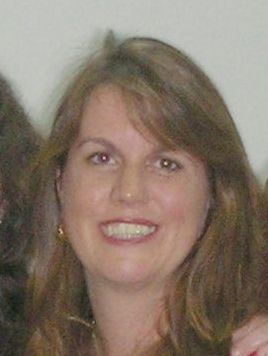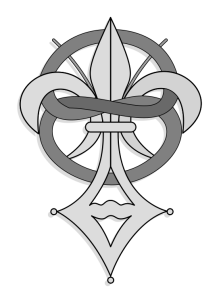
Daniel Gerhard Brown is an American author best known for his thriller novels, including the Robert Langdon novels Angels & Demons (2000), The Da Vinci Code (2003), The Lost Symbol (2009), Inferno (2013), and Origin (2017). His novels are treasure hunts that usually take place over a period of 24 hours. They feature recurring themes of cryptography, art, and conspiracy theories. His books have been translated into 57 languages and, as of 2012, have sold over 200 million copies. Three of them, Angels & Demons, The Da Vinci Code, and Inferno, have been adapted into films, while one of them, The Lost Symbol, was adapted into a television show.
The Da Vinci Hoax is a non-fiction book written by Carl E. Olsen and Sandra Miesel for the express purpose of critiquing Dan Brown's novel The Da Vinci Code. The book was first published in 2004 by Ignatius Press. According to Olson and Miesel, they wrote it out of concern that Brown's novel is popularizing theories, history and beliefs, which are used as the basis of the novel's plot, and defended by its author as factual, and that purport to expose Christianity as founded on lies that have been kept secret by the Roman Catholic Church throughout the centuries.

The Da Vinci Code is a 2006 American mystery thriller film directed by Ron Howard, written by Akiva Goldsman, and based on Dan Brown's 2003 novel of the same name. The first in the Robert Langdon film series, the film stars Tom Hanks, Audrey Tautou, Sir Ian McKellen, Alfred Molina, Jürgen Prochnow, Jean Reno and Paul Bettany. In the film, Robert Langdon, a professor of religious symbology from Harvard University, is the prime suspect in the grisly and unusual murder of Louvre curator Jacques Saunière. On the body, the police find a disconcerting cipher and start an investigation. Langdon escapes with the assistance of police cryptologist Sophie Neveu, and they begin a quest for the legendary Holy Grail. A noted British Grail historian, Sir Leigh Teabing, tells them that the actual Holy Grail is explicitly encoded in Leonardo da Vinci's wall painting, The Last Supper. Also searching for the Grail is a secret cabal within Opus Dei, an actual prelature of the Holy See, who wish to keep the true Grail a secret to prevent the destruction of Christianity.

The Lost Symbol is a 2009 novel written by American writer Dan Brown. It is a thriller set in Washington, D.C., after the events of The Da Vinci Code, and relies on Freemasonry for both its recurring theme and its major characters.

Elizabeth Johnson Kostova is an American author best known for her debut novel The Historian.

Leonardo da Vinci was an Italian Renaissance painter and polymath who achieved legendary fame and iconic status within his own lifetime. His renown primarily rests upon his brilliant achievements as a painter, the Mona Lisa and The Last Supper, being two of the most famous artworks ever created, but also upon his diverse skills as a scientist and inventor. He became so highly valued during his lifetime that the King of France bore him home like a trophy of war, supported him in his old age and, according to legend, cradled his head as he died.

The Va Dinci Cod: A Fishy Parody is a parody of the New York Times BestsellerThe Da Vinci Code. It was written by British critic and novelist Adam Roberts under the pen name Don Brine. The character names in the novels are reminiscent of the well-known characters: Sophie Nudivue, Robert Donglan, and Curvy Tash. It was published in 2005 by HarperCollins.
Michael Baigent was a New Zealand writer who published a number of popular works questioning traditional perceptions of history and the life of Jesus. He is known best as a co-author of the book The Holy Blood and the Holy Grail.
The Da Vinci Code, a popular suspense novel by Dan Brown, generated criticism and controversy after its publication in 2003. Many of the complaints centered on the book's speculations and misrepresentations of core aspects of Christianity and the history of the Catholic Church. Additional criticisms were directed toward the book's inaccurate descriptions of European art, history, architecture, and geography.
Richard Harris Leigh was a novelist and short story writer born in New Jersey, United States to a British father and an American mother, who spent most of his life in the UK. Leigh earned a BA from Tufts University, a master's degree from the University of Chicago, and a PhD from the State University of New York at Stony Brook.

The Da Vinci Code is a 2003 mystery thriller novel by Dan Brown. It is Brown's second novel to include the character Robert Langdon: the first was his 2000 novel Angels & Demons. The Da Vinci Code follows symbologist Robert Langdon and cryptologist Sophie Neveu after a murder in the Louvre Museum in Paris causes them to become involved in a battle between the Priory of Sion and Opus Dei over the possibility of Jesus Christ and Mary Magdalene having had a child together.
The Da Vinci Code WebQuests are a series of web-based puzzles related to the bestselling 2003 novel The Da Vinci Code, as well as the 2006 film. There have been several web quests, none of which directly related to any other. Probably the most well known is the game run by Google, though it was ultimately met with much more public criticism than the other various games.

Angels & Demons is a 2009 American action mystery thriller film directed by Ron Howard and written by Akiva Goldsman and David Koepp, based on Dan Brown's 2000 novel of the same title. It is the sequel to the 2006 film The Da Vinci Code, also directed by Howard, and the second installment in the Robert Langdon film series. However, the novel version was published before The Da Vinci Code novel. Filming took place in Rome, Italy, and the Sony Pictures Studios in Culver City, California. Tom Hanks reprises his role as Professor Robert Langdon, while Ayelet Zurer stars as Dr. Vittoria Vetra, a CERN scientist joining Langdon in the quest to recover a missing vial of antimatter from a mysterious Illuminati terrorist. Producer Brian Grazer, composer Hans Zimmer and screenwriter Akiva Goldsman also return, with David Koepp coming on board to help the latter.

Lewis Perdue is the author of 20 published books including Daughter of God, and The Da Vinci Legacy. Perdue was sued by Random House in 2003 when he charged that Dan Brown's The Da Vinci Code plagiarized those two books. Random House won the lawsuit but lost their demand to have Perdue pay their legal fees.

The Prieuré de Sion, translated as Priory of Sion, was a fraternal organization founded in France in 1956 by Pierre Plantard in his failed attempt to create a prestigious neo-chivalric order. In the 1960s, Plantard began claiming that his self-styled order was the latest front for a secret society founded by crusading knight Godfrey of Bouillon, on Mount Zion in the Kingdom of Jerusalem in 1099, under the guise of the historical monastic order of the Abbey of Our Lady of Mount Zion. As a framework for his grandiose assertion of being both the Great Monarch prophesied by Nostradamus and a Merovingian pretender, Plantard further claimed the Priory of Sion was engaged in a centuries-long benevolent conspiracy to install a secret bloodline of the Merovingian dynasty on the thrones of France and the rest of Europe. To Plantard's surprise, all of his claims were fused with the notion of a Jesus bloodline and popularised by the authors of the 1982 speculative nonfiction book The Holy Blood and the Holy Grail, whose conclusions would later be borrowed by Dan Brown for his 2003 mystery thriller novel The Da Vinci Code.
Henry Soskin, better known as Henry Lincoln, was a British author, television presenter, scriptwriter, and actor. He co-wrote three Doctor Who multi-part serials in the 1960s, and — starting in the 1970s — inspired three Chronicle BBC Two documentaries on the alleged mysteries surrounding the French village of Rennes-le-Château — and, from the 1980s, co-authored and authored a series of books of which The Holy Blood and the Holy Grail was the most popular, becoming the inspiration for Dan Brown's 2003 best-selling novel, The Da Vinci Code. He was the last living person to have written for Doctor Who in the 1960s.

The Holy Blood and the Holy Grail is a book by Michael Baigent, Richard Leigh, and Henry Lincoln.

Inferno is a 2013 mystery thriller novel by American author Dan Brown and the fourth book in his Robert Langdon series, following Angels & Demons, The Da Vinci Code and The Lost Symbol. The book was published on May 14, 2013, ten years after publication of The Da Vinci Code (2003), by Doubleday. It was number one on the New York Times Best Seller list for hardcover fiction and Combined Print & E-book fiction for the first eleven weeks of its release, and also remained on the list of E-book fiction for the first seventeen weeks of its release. A film adaptation was released in the United States on October 28, 2016.
Da Kath & Kim Code is a 2005 Australian comedy telemovie of the television series Kath & Kim.
The Da Vinci Code is a play based on the 2003 mystery thriller novel of the same name by Dan Brown, adapted by Rachel Wagstaff and Duncan Abel.












